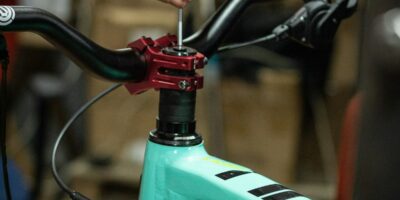
Bicycle Repair for Beginners
Bicycle Repair for Beginners
Bicycles are a fantastic mode of transportation and exercise. Knowing how to perform basic repairs can save you time and money. This guide covers fundamental bicycle maintenance and repairs.
Essential Tools
- Multi-tool
- Bike pump
- Tire levers
- Patch kit
- Chain lubricant
- Hex keys (Allen wrenches)
- Screwdrivers
Fixing a Flat Tire
Flat tires are common. Knowing how to fix them is essential. First, remove the wheel from the bike. Use tire levers to unseat the tire from the rim. Check the inner tube for punctures by inflating it slightly and listening for a hissing sound or feeling for air escaping. Once found, use a patch to cover the hole or replace the tube if the damage is extensive.
Adjusting Brakes
Properly functioning brakes are crucial for safety. If your brakes feel loose, tighten the brake cables by turning the barrel adjuster on the brake lever. For more significant adjustments, use a hex key to loosen the bolt holding the brake cable at the caliper. Pull the cable tighter or looser as needed. Ensure your brake pads are aligned with the rim and not rubbing against the tire.
Lubricating the Chain
Keeping the chain lubricated extends its life and ensures a smooth ride. Clean the chain first, removing any dirt or grime. Apply chain lubricant sparingly, turning the pedals to move the chain through the lubricant. Wipe off any excess to prevent attracting more dirt.
Fixing Chain Issues
If your chain slips or seems too loose, it may need tightening or replacing. Check the chain tension by pressing down on it halfway along its length; there should be only a small amount of movement. Use a chain tool to remove a link if the chain is too long. If the chain frequently slips during rides, it may be worn and need replacing.
Wheel Truing
A perfectly true wheel is essential for a smooth ride. If your wheel wobbles, it needs truing. Start by placing the bike in a stand. Spin the wheel and use a spoke wrench to adjust the tension of the spokes. Tighten spokes on the side where the wheel pulls and loosen those on the opposite side to correct the wobble. Work slowly and check your progress frequently.
Maintaining Tires
Maintaining proper tire pressure reduces flats and extends tire life. Use a pressure gauge to check that your tires are inflated to the pressure range listed on the tire sidewall. Inspect your tires regularly for cuts, glass, or other debris embedded in the tread. Replace tires that show significant wear or damage.
Gear Shifting Adjustments
Smooth shifting relies on properly adjusted derailleurs. If your bike struggles to change gears, it’s time to make some adjustments. For the rear derailleur, use the barrel adjuster to fine-tune cable tension. Shift through all the gears, making continuous minor adjustments until shifting is smooth. For the front derailleur, check that the cage moves the chain smoothly between chainrings without rubbing.
Handlebar and Seat Adjustments
Comfort and control are dependent on proper handlebar and seat adjustments. Ensure the handlebars are at a comfortable height and aligned with the front wheel. Adjust the seat height so your leg is almost fully extended at the bottom of the pedal stroke. Make these adjustments using an appropriate wrench or hex key.
Brake Pads Replacement
Worn brake pads are ineffective. Check your brake pads regularly for wear. Replace them if they are too thin or if they don’t halt your bike effectively. Release the brake cable and remove the old pads. Insert the new pads, ensuring they are aligned with the wheel rim. Reattach the brake cable and test the brakes.
Checking Bolts and Nuts
Loose bolts and nuts can cause serious issues. Regularly check all the bolts and nuts on your bike, including those on the handlebars, seat, wheels, and frame. Tighten any that are loose, but be careful not to over-tighten and strip the threads.
Cleaning Your Bike
Keeping your bike clean prolongs its life. Use a soft brush and soapy water to clean the frame, wheels, and components. Avoid using high-pressure water jets, which can push dirt into bearings and seals. Rinse and dry your bike, and apply lubricant to the chain and other moving parts.
Inspecting Bearings
Bearings in the wheels, bottom bracket, and headset allow smooth movement. If you notice grinding or resistance, it may be time to clean and re-grease or replace the bearings. Remove the wheel, crankset, or fork to access the bearings. Clean thoroughly, apply new grease, and reassemble your bike.
Emergency Roadside Repairs
Carry a basic repair kit when you ride. Include a spare tube, patch kit, tire levers, multi-tool, and a pump. If you have a minor issue, you can perform quick fixes on the go. Learn how to fix a flat, adjust brakes, and make other minor repairs before setting out on longer rides.
Dealing with Rust
Rust can damage your bike over time. If you notice rust forming, take action immediately. Use fine-grit sandpaper or a rust remover to clean affected areas. Apply a protective coat of paint or clear coat to prevent further rusting. Keep your bike dry and store it indoors to minimize rust formation.
Inspecting the Frame
Regularly check your bike’s frame for cracks, dents, or other damage. Frame integrity is critical for safety. If you find any issues, consult with a professional to determine if the frame needs repair or replacement. Riding with a compromised frame can be dangerous.
Replacing Cables and Housings
Over time, brake and gear cables can fray and housings can accumulate dirt. Replace them when they become stiff or difficult to operate. Disconnect the old cable, remove it from the housing, and thread the new cable through. Secure it in place and make necessary adjustments for smooth operation.
Correct Tire Size and Type
Using the correct tire type and size improves bike performance and safety. Choose tires appropriate for your riding style and conditions, whether road, mountain, or hybrid. Ensure your tires match the size specifications of your rims for proper fit and function.
Understanding Bike Geometry
Understanding bike geometry helps with fitting and comfortable ride. Key aspects include frame size, top tube length, and seat angle. An improperly sized bike can lead to discomfort and inefficient riding. Consult sizing charts and test ride bikes to find the right fit.
Upgrading Components
Upgrading components can enhance your riding experience. Consider improvements like lighter wheels, better brakes, or a more comfortable seat. Research compatibility and choose upgrades that suit your riding needs and budget.
Compression and Suspension Maintenance
If your bike has suspension, keep it properly maintained. Clean and inspect the suspension regularly. Check for leaks, and make sure seals are intact. Follow the manufacturer’s guidelines for servicing intervals. Properly maintained suspension enhances ride comfort and control.
Joining a Bike Community
Joining a local bike community can be beneficial. Group rides, workshops, and forums provide support and knowledge. Engaging with experienced cyclists helps improve your repair skills and overall biking experience.
Keeping a Maintenance Log
Keep a log of your bicycle maintenance. Note dates of repairs, parts replaced, and any issues. This helps track when future maintenance is needed and ensures your bike remains in good condition.
These basics will keep your bike in top shape. Regular maintenance ensures a safer and more enjoyable ride.




Subscribe for Updates
Get the latest articles delivered to your inbox.
We respect your privacy. Unsubscribe anytime.